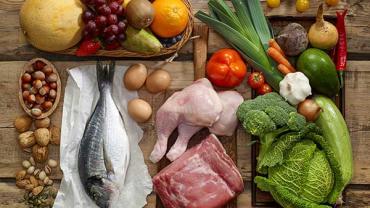
What are you, a caveman?
So easy, a caveman can do it.
Cavemen are getting a bad rap these days. But just because they didn’t have the internet and smartphones doesn’t mean we can’t learn something from them. They are, after all, our physiological and anatomical ancestors, and while they may have suffered accidents, trauma, and infectious diseases, they didn’t experience type 2 diabetes, Alzheimer’s disease, cardiovascular disease, or other chronic illnesses that dominates the healthcare system today. Numerous factors are at work in these conditions, but one that we have control over—perhaps the most control—is diet.
Before there were corner delis, Uber and pizza delivery, our ancestors may have had to travel great distances on foot to gather plant foods and to track and capture prey. They would have had to remain vigilant for threats and occasionally sprint away from predators. Anything that impaired someone’s ability to do that—chronic joint pain, for example, or anxiety, depression, or macular degeneration—would have been a liability and an obstacle to mere survival. What were our ancestors eating—or not eating—that helped them live to see another day and remain completely unfamiliar with the illnesses that plague us now?
While ancestral diets varied greatly depending on geographical and climatic factors, anthropological evidence suggests that wherever it was ecologically possible, animal foods (predominantly protein and fat) accounted for 45–65% of hunter-gatherer (HG) diets, contributing to as much as 65% of total energy intake. According to data from Paleo diet researcher Loren Cordain and others, as much as 73% of worldwide HG societies followed this type of eating strategy, compared to just 14% of these societies deriving 56–65% of energy from plant foods. According to Cordain et al, “This high reliance on animal-based foods coupled with the relatively low carbohydrate content of wild plant foods produces universally characteristic macronutrient consumption ratios in which protein is elevated (19–35% of energy) at the expense of carbohydrates (22–40% of energy).”
That carbohydrate range is well below what’s recommended by the Health and Medicine Division of the National Academies as the “Acceptable Macronutrient Distribution Range” (AMDR) for carbohydrate, which is 45–65% of calories. The AMDR for protein is 10–35%, but most Americans stick to the low end of this, with protein accounting for 15–16% of an adult’s total calories. Research suggests that decreased protein intake may contribute to overconsumption of fat and carbohydrate in an effort to obtain critical nutrients that are in shortfall owing to inadequate protein (the “protein leverage hypothesis”).
Protein isn’t just about satiety. Animal-sourced protein, including seafood and eggs, provides higher concentrations of nutrients in more bioavailable forms than are typically found in plants, such as B12, choline, iron, zinc, iodine, vitamin A (not carotenoids), and the fatty acids EPA and DHA. Animal foods were undeniably part of the diet humans evolved on, so those following vegetarian or vegan diets in the modern world may fall short on some of these critical compounds.
Many of the chronic, non-communicable illnesses people live with today stem from chronic hyperinsulinemia—high insulin even in the absence of elevated blood glucose. And while protein is slightly insulinogenic, carbohydrates—particularly the kinds of refined and ultra-processed carbohydrates that are ubiquitous today but which were completely nonexistent many thousands of years ago—have a much greater insulin-stimulating effect. Overconsumption of these kinds of foods is a major contributor to type 2 diabetes, cardiovascular disease, hypertension, obesity and more.
Does this mean we should swear off all carbohydrates? No. Spinach, eggplant, zucchini, blackberries and lentils need not be in the nutritional crosshairs. (Even strict ketogenic diets allow for plenty of vegetables.) Healthy, robust, long-lived people all around the world have consumed some amount of these wholesome, unrefined carbohydrates throughout the ages without developing cardiometabolic illness. It’s not carbohydrate, per se, but the total amount, the way they’re processed, and how this affects someone’s individual carbohydrate sensitivity.
Beyond the protein/carb issue, our ancestors likely consumed a much greater variety of foods based on seasonality as well as a greater variety and amount of phytonutrients from unrefined plants. Many of these have impressive research supporting their use as therapeutics or potential preventative elements against modern health conditions. Examples include lutein for macular degeneration and supporting overall eye health, lycopene for prostate health, and bioactive compounds in berries that are anti-inflammatory and high in antioxidants.
In the modern world, we have immense freedom to choose from among any number of eating strategies based on personal preference, religious beliefs, or other parameters. Whether someone chooses a low- or high-carb diet, or a diet heavier or lighter in animal-sourced foods, the theme of most healthy diets is to consume unrefined foods prepared in ways that enhance their nutrient content rather than degrade it (such as culturing or fermentation), and to stay within one’s own carbohydrate tolerance limit.